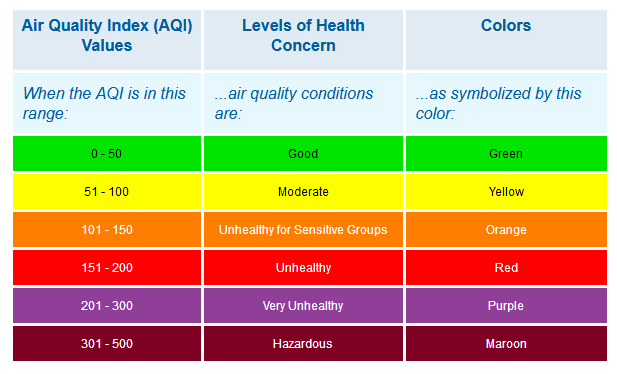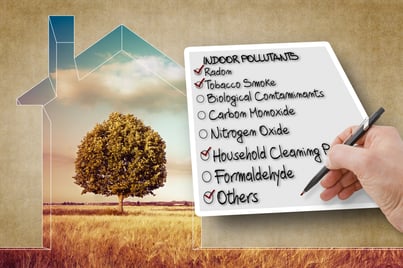Indoor air quality (IAQ) is a term, which refers to the air quality within and around buildings and structures, especially as it relates to the health and comfort of building occupants. There are several factors affecting indoor air quality, ranging from biological to chemical contamination, as well as elements of weather such as humidity and temperature.
Research carried out by the United States Environmental Protection Agency, the EPA, shows that most people spend over 90 percent of their time indoors. This statistic goes to show how important it is for Commercial Real Estate (CRE) owners and building owners as a whole to pay attention to the quality of air made available to their tenants and occupants. IAQ if not properly monitored, could potentially lead to the accumulation of hazardous gasses and chemicals, which in turn could have long lasting and damaging effects on the health of the building occupants. Some of the most popular everyday gasses which when inhaled pass a certain threshold could pose health problems include: Carbon dioxide, Carbon monoxide – found in smoke (could lead to asphyxiation and death if inhaled for a considerable duration).
Enclosed below is the table of acceptable levels of air quality.

Source: https://airnow.gov/index.cfm?action=aqibasics.aqi
In light of the dangers posed by poor IAQ, the EPA came up with a yardstick, which is widely accepted for the measurement of indoor pollution levels in commercial buildings – the Air Quality Index (AQI). The AQI is a measurement band, indicating the nature of air quality based on a score table of 0-500. Higher values of AQI indicate increase air toxicity, with lower levels of between 0-100 considered as healthy.
The AQI is calculated, taking into consideration generally acceptable levels of gas and particulate matter inhalation. It is therefore important to note that whilst an index level of 51-100 might be considered as healthy to most people, it might pose a major health hazard to others, based on health conditions.
Types of IAQ Monitoring/Testing
There are basically two main types of IAQ monitoring for commercial buildings – proactive and reactive IAQ tests.
Reactive IAQ tests are carried out upon suspicion of the occurrence of an IAQ hazard. They include basic IAQ tests and elimination/repair of the source of the hazard. Simply put, these are air quality tests carried out after the air in a commercial building is either already of poor quality, or suspected to be of poor quality. They are usually commissioned after complaints of a bad odor or difficulty in breathing by occupants are received.
When such occurrences take place, commercial buildings usually commission a full IAQ test for the entire building. The assumption these tests run on is “the air quality is good until there is a complaint”. In the absence of complaints, commercial buildings operating under this system only commission IAQ test in line with local and State regulations.
Proactive IAQ tests, also known as continuous IAQ tests, are installed and sustained ongoing processes of measurement and monitoring of IAQ to ensure that they are of good quality and below the hazard threshold at all times. While reactive IAQ tests depend on the occurrence of an adverse IAQ condition to be implemented, proactive IAQ on the other hand is ever ongoing.
Commercial buildings operating under this system of IAQ monitoring are always up to date with real time data on the nature of IAQ within the building. This method of IAQ monitoring leverages latest technological advancements to monitor, control, automate and provide real time reports on a commercial building’s IAQ.
Advantages of Proactive IAQ Tests over Reactive IAQ Tests
1. Proactive IAQ is less Expensive
Commercial building managers always keep a close eye on costs and expenses, with the sole purpose of minimizing them with every chance they get. Given that most States mandate at least an annual IAQ test by commercial buildings, proactive IAQ monitoring comes across as a cheaper alternative to reactive IAQ monitoring.
With proactive IAQ tests, CRE owners are always alerted immediately when there is the possibility of an IAQ hazard occurrence. This enables management to immediately move to action, containing the potential hazard source, to stop it from either occurring or spreading. Actions like this could potentially save the building owners thousands to millions of dollars in maintenance cost had the situation not be contained. This however is not the case with reactive IAQ tests, which could lead to the commercial property been put off business for a while, not taking in to consideration the loss of reputation and potential lawsuits.
2. IoT Compatibility
The current trend in the commercial building industry is the move towards smart buildings. Smart buildings are envisaged to be worth an estimated $31.74 billion of the building industry by 2022, and the technology leading this revolution is the Internet of Things (IoT). Commercial buildings are therefore moving to that future where everything will have to leverage this platform of interconnectivity. Reactive IAQ testing unfortunately is not one of those commercial building aspects that can be reliable to leverage IoT.
Proactive IAQ tests on the other hand actually fit effortlessly in to the smart building concept.
How? You might wonder. Proactive or continuous IAQ tests make use of technology to be able to sustainably operate round the clock. Proactive IAQ measurement hardware come with sensors, which are programmed to send specific feedbacks based on predetermined rules. Since IoT also leverages sensors and actuators to collect data and perform specific operations, proactive IAQ sensors can actually be integrated with other sensors on an IoT platform to enable it to perform even better.
3. Occupant Retention
Most commercial buildings operate in an open market in which there is a very high level of competition. When operating in competitive markets, it is always important to note that the smallest things could make all the difference. In this instance, having in place a constant IAQ monitoring system could be the last action necessary to establish a greater competitive edge.
Building occupants in their human nature will always give priority to their health. And as far as health goes, building occupants and tenants will rather they had round the clock air quality surveillance, than periodic air quality surveillance. This therefore makes a commercial building with a proactive IAQ testing system more attractive to occupants, than one that relies on reactive IAQ tests. A high occupant retention rate and increase in demand for accommodation will obviously lead to an increase in the income generated by the commercial building.
4. Building Valuation
The value of a building is very important to its owners, as it tells them what they could potentially get should they decide to sell the building. Building valuation is also important when drawing up a commercial building’s balance sheet, applying for a loan, or buying an insurance policy for the building. Under all of the aforementioned circumstances, some level of due diligence has to be done to actually ascertain the value of the commercial property.

Having in a place a proactive IAQ testing mechanism in a commercial property goes to increase the value of the property. A good proactive IAQ test result tells potential buyers that based on ongoing air quality monitoring; all possible air quality hazards are contained, implying a good HVAC system. It tells the banks that the building is in good shape and can easily be liquidated, reducing the risk of delinquency and allowing the bank to give the building a big loan. A good proactive IAQ report tells an insurer that the possibility of risk occurrence is low due to ongoing monitoring. This could significantly lower premiums. These advantages however cannot be associated with reactive IAQ tests.
Conclusion:
In conclusion, indoor air quality is increasing becoming important to all parties involved in a commercial building – CRE and building owners, maintenance personnel, facility managers and operations-in-charge. IAQ can be maintained and controlled either in a proactive manner or in a reactive manner. The proactive controls ensure ongoing monitoring with notifications that are sent as and when issues arise. Reactive controls use either annual inspections or occupant complaints to address issues. Hence, proactive measures need to be prioritized to not only achieve your your IAQ goals easily but also to be attractive to new tenants or renewal of leases, thereby maximizing your profits.
Listen to our latest webinar to learn more about Indoor Air Quality




